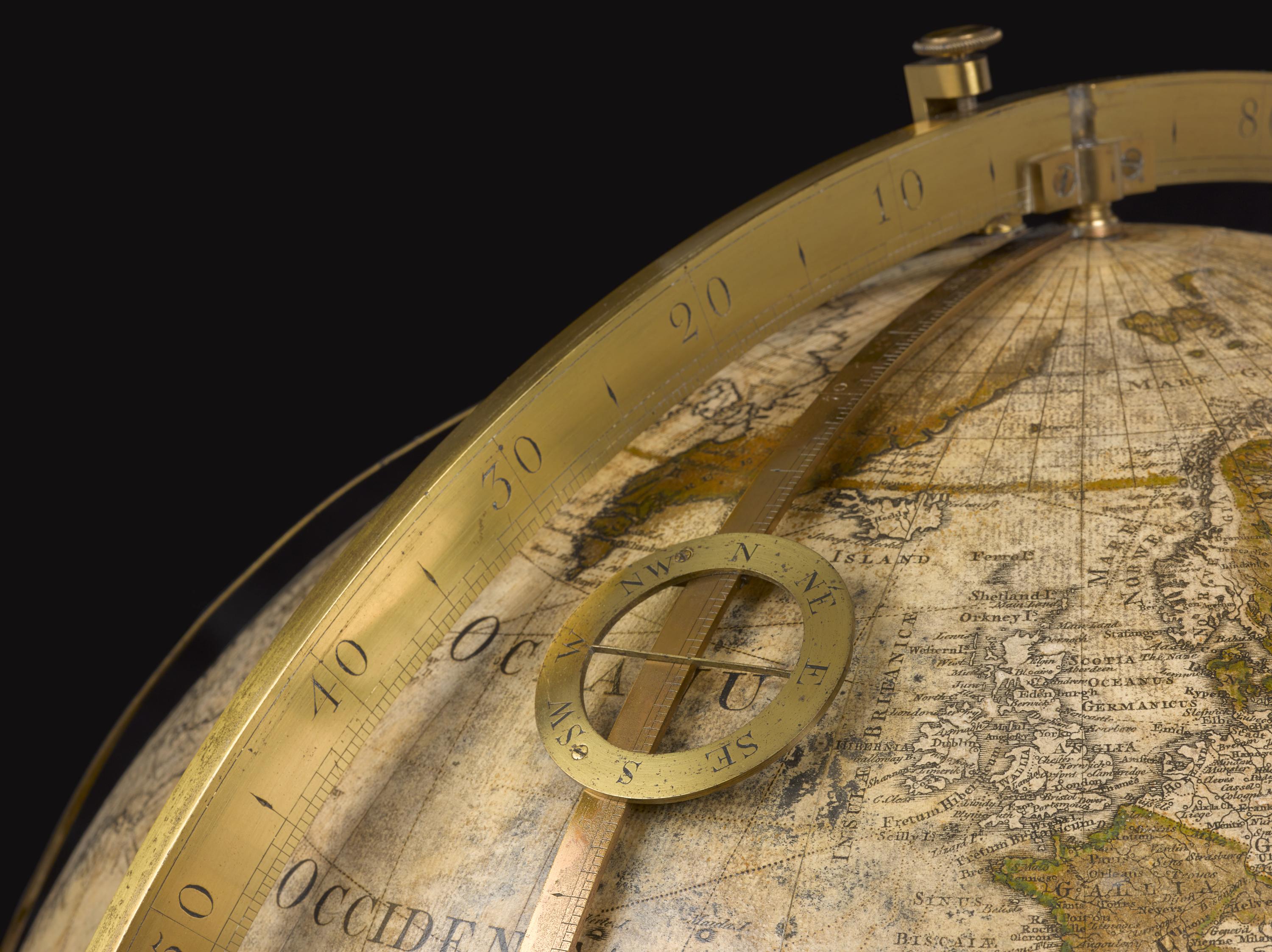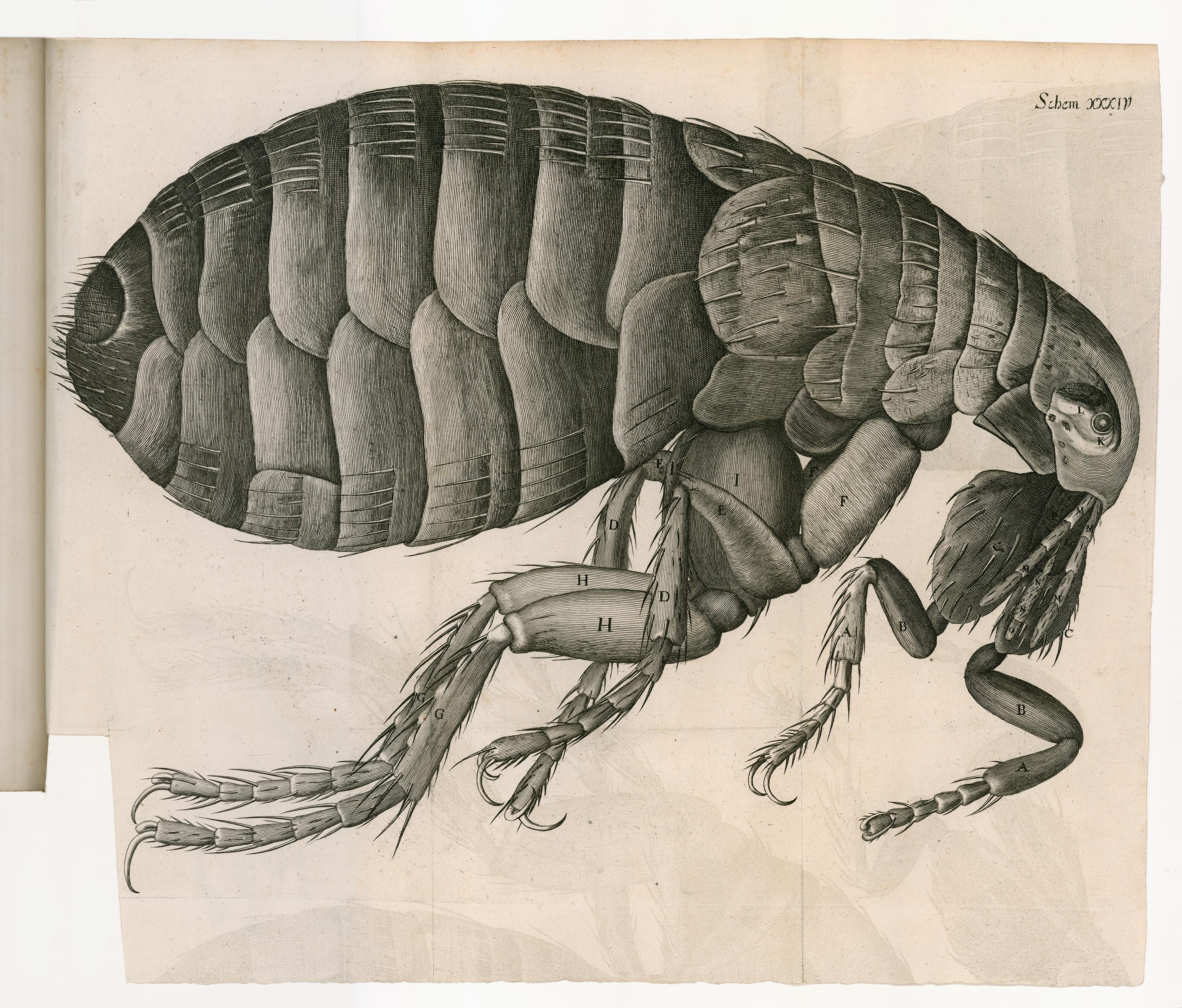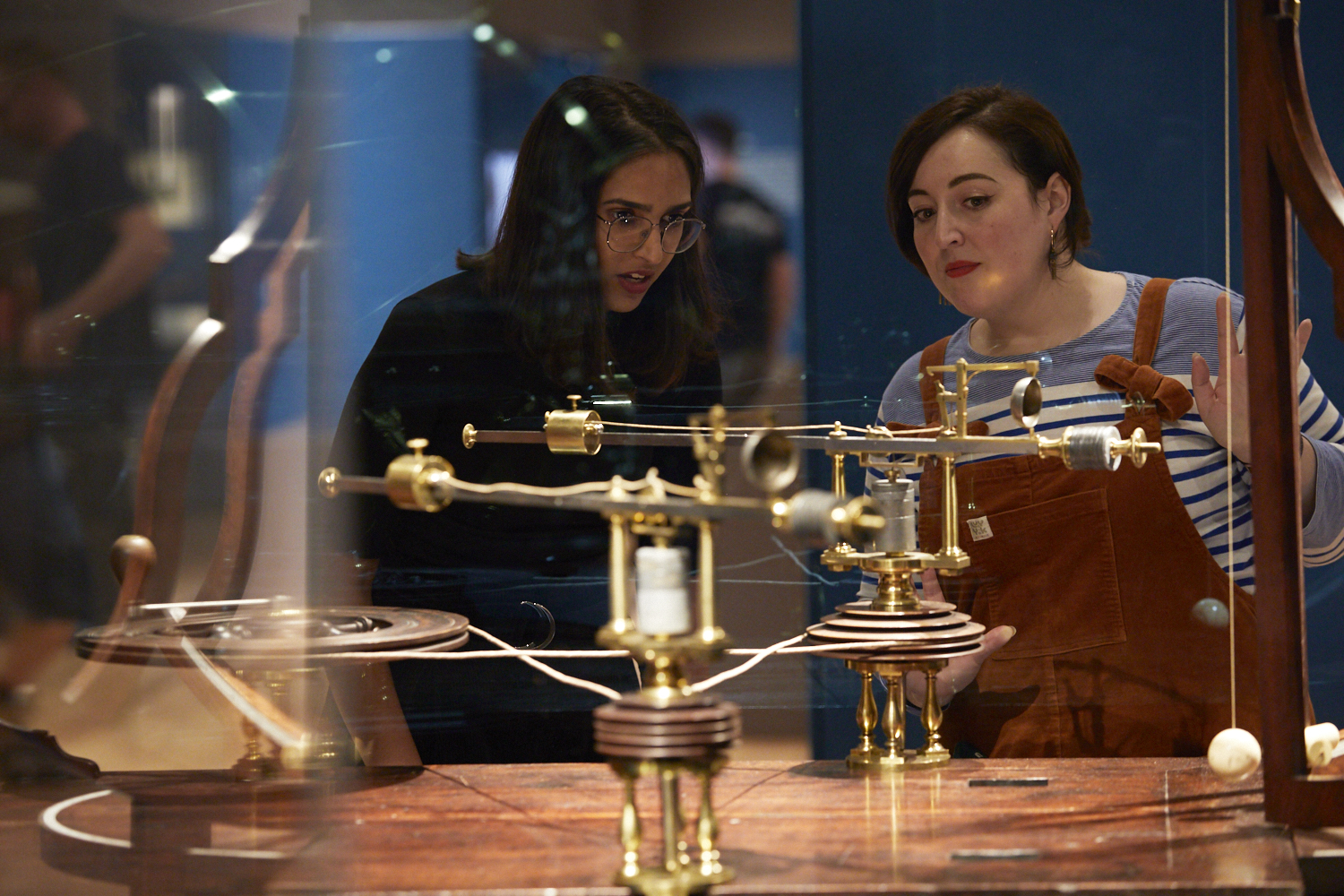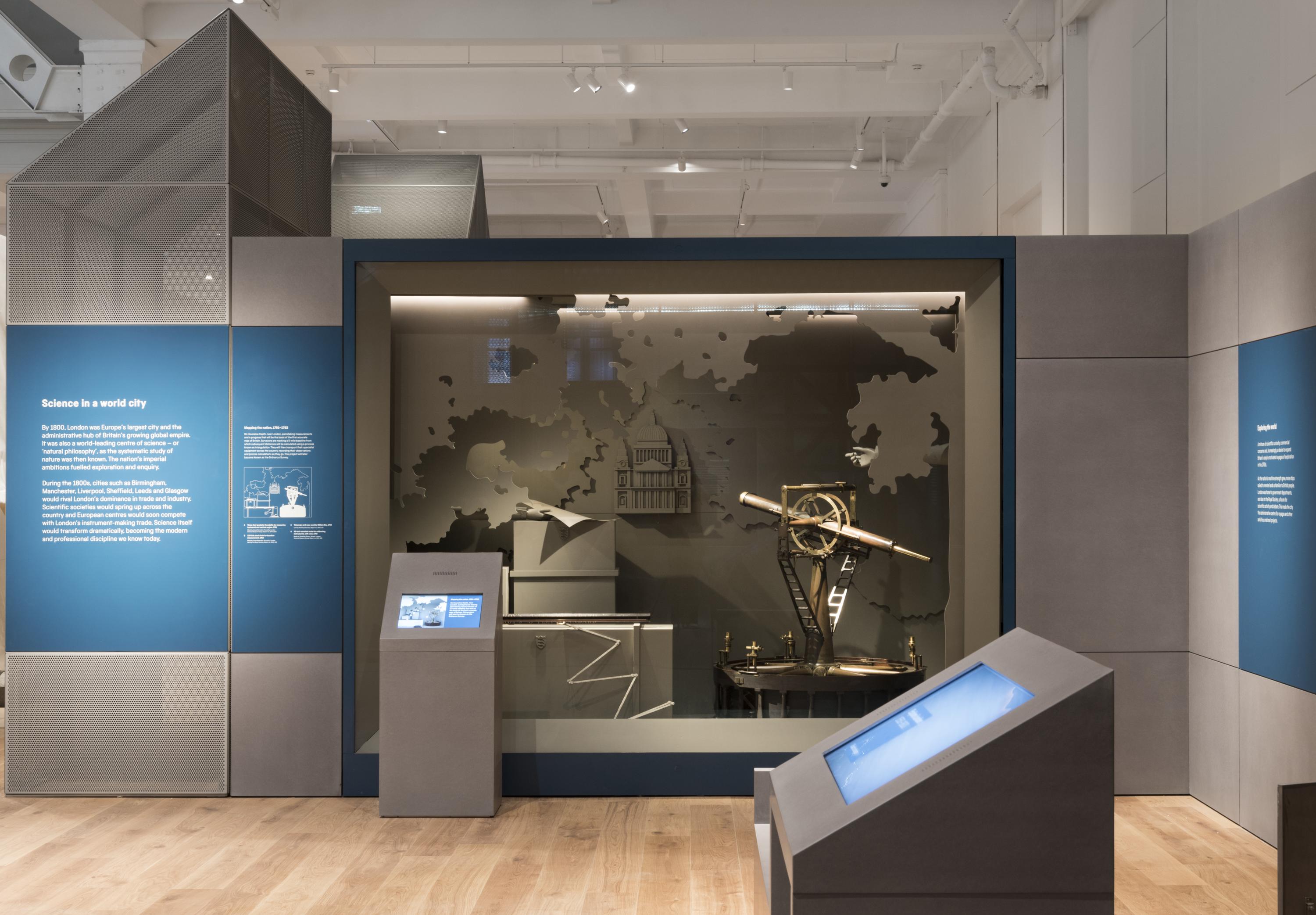In 1550, London was a hustling, bustling, rapidly expanding commercial city, with a relatively modest position on the world stage. By 1800, it was a global city and a world-leading centre of science. Science City tells the story of how science was integral to that transformation.
London was not a traditional learned-centre. Unlike Oxford and Cambridge or European cities including Paris and Leiden, London did not have a university until the 1820s. The science that happened in London was frequently driven by the commercial preoccupations of the city – which was not only the nation’s capital but also its busiest port, chief financial and trading centre, a hub of manufacture, the location of government and main residence of the monarch.

The introductory section of the gallery, ‘A New Trade’, explores how Elizabeth I recognised the economic potential of mathematics – for improving surveying, navigation, and architecture, and aiding trade and taxation.
At the time, the calculation and measurement devices used by practitioners in these fields generally had to be purchased from abroad, from craft centres including Flanders, Augsburg, and Nuremberg. The queen’s advisers encouraged artisans, based in Europe, with skills in engraving and instrument-making to come to London and pass on their skills to native makers.
By the early 1600s, this new trade was thriving. You will find instruments made by Elias Allen, a highly respected and successful maker who made devices for a wide range of customers on display in the gallery. This compendium, which combined a sundial, calendar and nocturnal for time-telling at night, was specifically made for a royal client.

We then move on to ‘Experiment and the City’. This part of the gallery covers the foundation of the Royal Society, a learned club formed in London to champion experiment as a way of finding out about the world. The Society’s fellows were aided in this project by the availability of new kinds of instruments, including microscopes, telescopes and air pumps, which enabled them to probe nature’s secrets in new ways.
The Royal Society’s Curator of Experiments, Robert Hooke, wowed the scientific world with his book Micrographia, in which he depicted the tiny worlds he had seen through his microscope. Central to Hooke’s success were his relationships with London’s artisans, with whom he collaborated to produce the lenses and other components for the instruments he used in his experiments.

‘Public Science in London’, the following section, reveals how science became a popular pastime in the 1700s. Audiences flocked to natural philosophy lectures, read scientific books, and purchased instruments for use at home. Particularly intriguing for London audiences were demonstrations of how science brought practical benefits. Models of a pile-driving machine used in the construction of Westminster Bridge during the 1740s were regularly used by lecturers to explain mechanical principles.
George III was a passionate advocate for science, and upon becoming king commissioned a set of scientific demonstration apparatus for the education of himself and the wider royal family. The ‘philosophical table’, with its range of attachments, enabled a user to perform all the standard mechanical demonstration experiments.

The final section, ‘Science in a World City’, explores how ambitious projects, administered from London, were driven by intertwined scientific and imperial motives.
One such example is the first voyage of James (later Captain) Cook, to make precise observations from Tahiti of the transit of Venus across the Sun in 1769 – before going on to search for the Southern Continent. His expedition was equipped with the finest scientific hardware of the time, made in the workshops of London’s instrument-makers.

This gallery draws on three iconic scientific collections: the Science Museum Group Collection; the King George III collection owned by King’s College London; and the collection of the Royal Society. Together they reveal how science was London’s lifeblood, but more than this, they emphasise that science was at the heart of our culture – and that is just as true today.
Science City is funded by The Linbury Trust, the National Lottery Heritage Fund, DCMS/Wolfson Museums, and Galleries Improvement Fund, The John S Cohen Foundation and Iain and Jane Bratchie.
